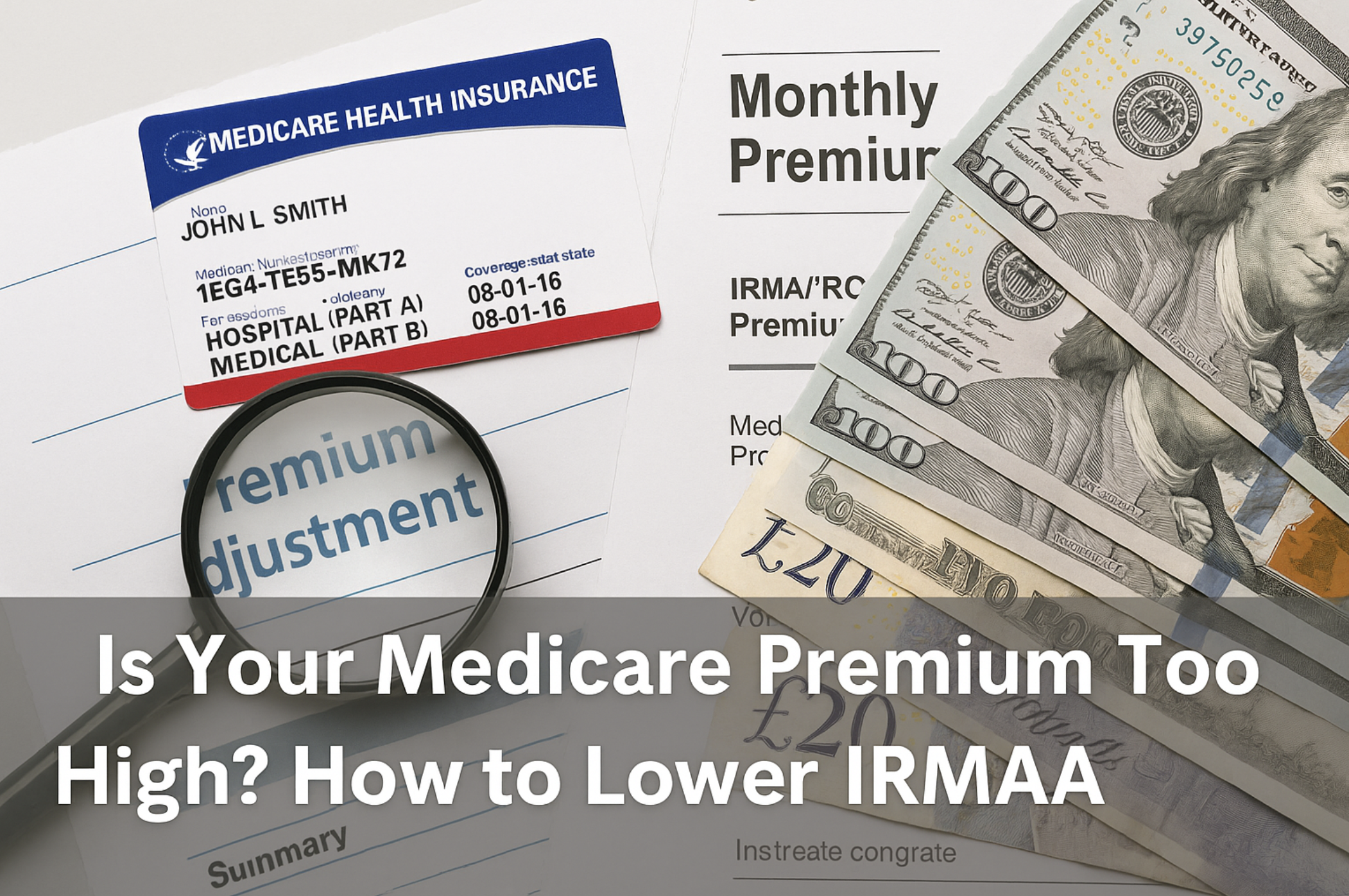
Is Your Medicare Premium Too High? How to Lower IRMAA Surcharges
A step-by-step guide to managing Medicare IRMAA and reducing unexpected premium hikes.
If you’ve opened your Medicare bill and noticed a sudden spike in your premium, you’re not alone. Many retirees are facing something called IRMAA, short for Income-Related Monthly Adjustment Amount. While the name sounds complex, the takeaway is straightforward: higher income results in higher Medicare premiums.
The good news is that there are ways to manage it.
What Is IRMAA?
IRMAA is a surcharge added to Medicare Part B and Part D premiums if your income exceeds certain thresholds. Medicare uses your modified adjusted gross income (MAGI) from two years prior to determine whether you’ll owe extra.
For example: Your 2025 Medicare premiums are based on your 2023 income.
2025 IRMAA Thresholds
For 2025, IRMAA surcharges begin if your MAGI exceeds:
- $106,000 for single filers
- $212,000 for married couples filing jointly
Premiums increase in tiers. The higher your income, the more you may pay each month.
Step-by-Step: How to Lower or Avoid IRMAA
1. Monitor Your MAGI Closely: MAGI includes your adjusted gross income plus tax-exempt interest income. Items like capital gains, IRA withdrawals, and Roth conversions can unexpectedly push you into a higher IRMAA bracket.
What to consider: Reviewing your return each year and anticipating income changes can help you stay in the right range.
2. Time Roth Conversions Strategically: Roth conversions are often beneficial long term but can raise your MAGI in the short term. Timing matters.
What to consider: Spreading conversions over multiple years or focusing on lower-income years can help minimize their impact on Medicare premiums.
3. Coordinate Investment Withdrawals: If you’re pulling income from IRAs, taxable accounts, or Roths, think about how to blend withdrawals to manage income levels.
What to consider: A tax-diversified withdrawal strategy may help smooth your income and keep you under the IRMAA line.
4. Use Qualified Charitable Distributions (QCDs): If you’re age 70½ or older, QCDs allow you to give directly from your IRA to a charity. These distributions count toward your RMD but don’t show up in your taxable income.
What to consider: QCDs are a simple way to reduce MAGI while maintaining charitable giving goals.
5. Appeal If You’ve Had a Life-Changing Event: Medicare allows appeals for certain events like:
- Retirement
- Death of a spouse
- Divorce
- Loss of income or pension
What to consider: If your income has dropped due to one of these events, Form SSA-44 allows you to request a reassessment.
Wrapping It All Up
IRMAA can come as a surprise, especially when income changes or required minimum distributions (RMDs) shift your tax picture. Looking ahead two years and coordinating income, taxes, and healthcare planning can reduce surprises and maintain flexibility.
This is a topic we continue to track closely. As always, our goal is to make sure these moving parts work together in support of your broader plan.
This commentary reflects the personal opinions, viewpoints and analyses of the Seaside Wealth Management, Inc. employees providing such comments, and should not be regarded as a description of advisory services provided by Seaside Wealth Management, Inc. or performance returns of any Seaside Wealth Management, Inc. client. The views reflected in the commentary are subject to change at any time without notice. Nothing in this commentary constitutes investment advice, performance data or any recommendation that any particular security, portfolio of securities, transaction or investment strategy is suitable for any specific person. Any mention of a particular security and related performance data is not a recommendation to buy or sell that security. Seaside Wealth Management, Inc. manages its clients’ accounts using a variety of investment techniques and strategies, which are not necessarily discussed in the commentary. Investments in securities involve the risk of loss. Past performance is no guarantee of future results.
